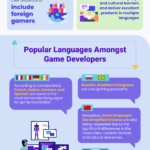When it comes to customer service, the gaming industry is full of contrasts, mainly due to the large number of companies on the market, the differences between them, but also the multitude of services needed to provide an excellent user experience. You might expect the big game publishers and developers to excel in this area, while the indie game studios would have shortcomings, but that’s not always true.
The customer experience is important, but how do you support your entire player base all day, every day, in every language, on every channel, at a low cost and a high level of quality?
Let’s take a look at some indicators for measuring it and some good practices that both new companies in the game and veterans could implement.
But first,
What is user experience?
The user experience is the impression that players have about your brand as a whole and includes all aspects of the buyer’s journey. Their interaction with your game(s)s and services and with your company in general, results in their vision of your brand. Positive or negative, the consumer experience influences your entire business, including revenue and profit.
The main elements that create the customer experience are the people and the products (games). Are they amazed by your game? Are they happy with the attention they get from a customer service representative to help them solve their problem?
These are just some general examples of factors that come into play when creating a great user experience. However, there are several metrics you can analyze to know if you are on the right track. Here is a list of the top 10, and their significance.
Top 8 user experience metrics
According to The Lumoa State of the Customer Experience survey, all companies use one or several of the 6 customer experience metrics to analyze the user experience: Net Promoter Score (NPS), Customer Satisfaction (CSAT), Churn rate, Retention rate, Customer Lifetime Value (CLV) or Customer Effort Score (CES).
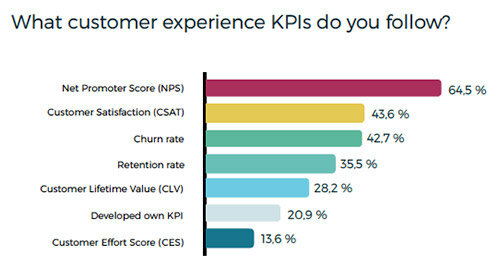
Let’s see what they mean.
Customer Effort Score (CES)
Why it’s important: CES tells you how easy it is for your customers to find something. It can be anything from finding the game you want to downloading, updating, and resolving a request with customer support.
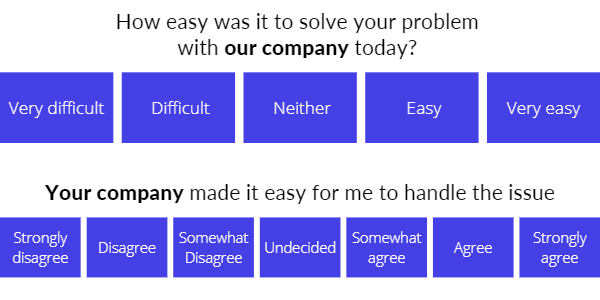
Basically, the more effortless you make the user experience, the more likely are your players to download and play your game.
Customer Satisfaction (CSAT)

Why it’s important: it tells you where and how to improve user experience. You can use CSAT responses to figure out which parts of your game players are satisfied or unsatisfied with. Then make any necessary adjustments to these specific areas.
Net Promoter Score (NPS)
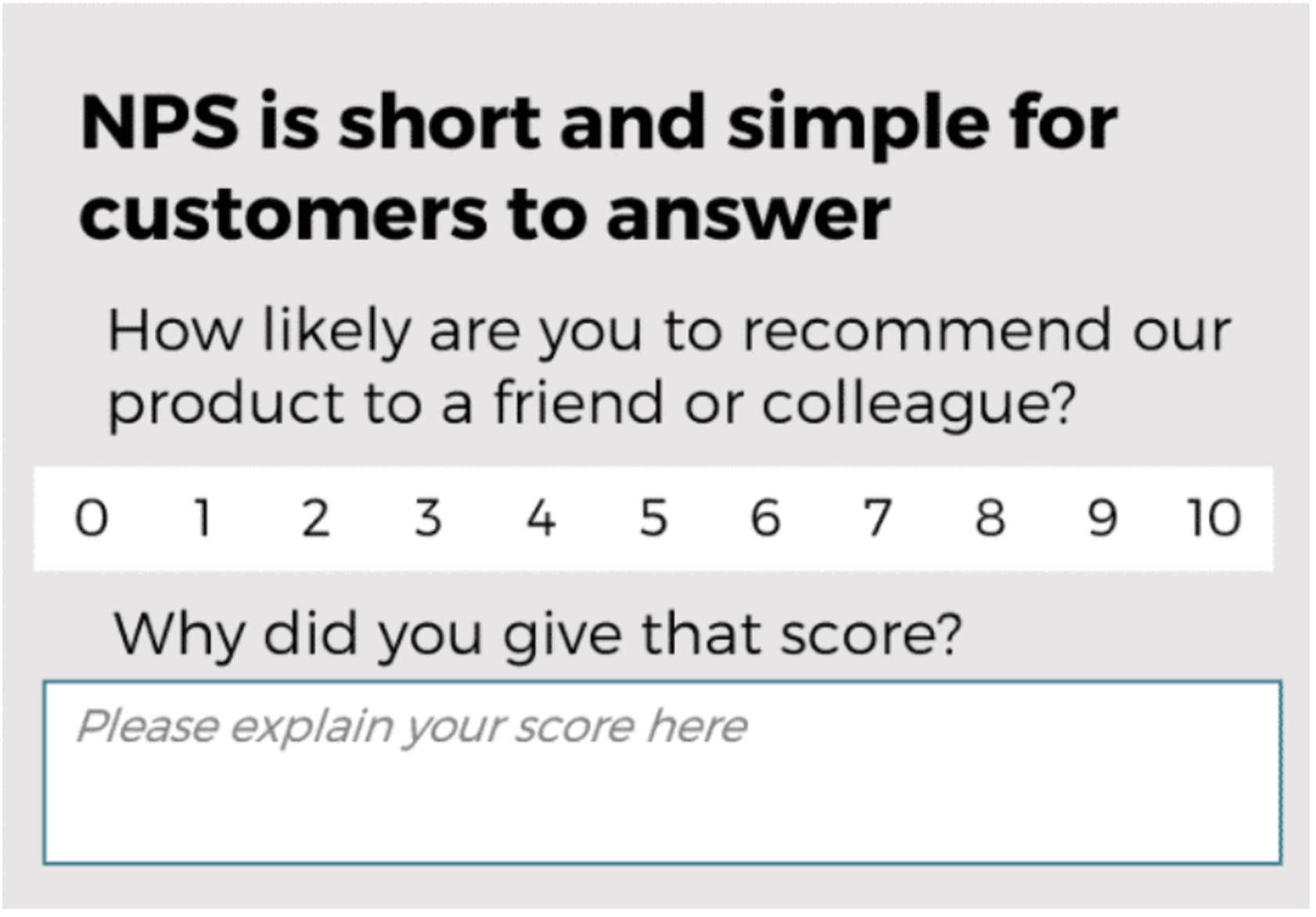
Why it’s important: it shows you how loyal your players can be and how many of them are likely to recommend your game to a friend or colleague. Usually, you use a scale from 1 to 10, and you can split the respondents into three categories:
- detractors – those that answer 1-6
- neutrals – people who answer 7 – 8
- promoters – those that answer 9 – 10.
Customer Churn Rate: understand how to improve your user experience
Why it’s important: it tells you how many players are leaving your game after a period of time or no longer paying the subscription fee (if you are using the F2P model). The lower the churn rate, the more loyal gamers you’ll have.
Use the drop-off points in your retention measurement to see where, or which group of customers, are losing interest in your product. Then make all necessary adjustments to improve the user experience in these areas.
User Retention Rate:
Why it’s important: by analyzing this metric, you’ll find out how many players use your game over a given time and it’s highly connected to your churn rate, as previously discussed.
It shows you how much gamers value your product and have the chance to make improvements. As it’s far more expensive to onboard new users than to keep the current ones, this is something worth doing.
Monthly Active Users (MAU)

Why it’s important: It tells you how many players are actively engaging with your game in a given time – in this case, within a month.
You also need to be aware that this metric shows how a user’s activity changes over time. If you want a more in-depth analysis, you can also calculate Weekly Active Users (WAU) and Daily Active Users (DAU), depending on how often gameplayers are logging into your product.
Trial-to-Paid Conversion Rate
Why it’s important: it tells you how many of your trial users (or free subscribers) are turning into paying gamers for your product. You’ll also get an overview of the number of users you can expect to see turn into paying customers.
Customer Referral Rate
Why it’s important: if NPS shows you the number of users who say they’ll refer your game to a friend or colleague, the referral rate shows how many are actually doing it. It’s the volume of referred subscriptions/purchases from your total selling.
In short, when customers are referring you to their colleagues, family, and friends, it means they believe your game has high quality and is worth investing in. But for this, they need to have had their own positive experiences. This means all interactions with your business. The smoother these processes are, the more likely they’ll be to refer you.
Top 8 best practices for providing a great user experience to your players
First and foremost, it’s important to understand that a professional customer support team is vital. And from this point of view, who can understand and help players better than…. gamers?
The best people to hire for this role are those who really understand or also play the game. But just gaming expertise is not enough. To be professional and reach their (and your) goals, your customer support team needs to have access to resources and also receive proper training: this is the only way to better understand what fixes what, as well as to ensure the quality of the solutions they provide.
Also, make a rule of using personalized replies to your gamers, to demonstrate that you value your users. In the years of mass emailing and bots, showing empathy and care is becoming increasingly important.
The golden rules to provide a great user experience
Provide a great gameplay
Offering a great product (or service) is the first rule of every successful business. And especially in the gaming industry, the players’ expectations are very high. This means you need to pay attention to:
- Story: the game story is vital in engaging your audience on an emotional level. Therefore, make sure your product is based on an engaging story with relatable characters.
- Graphics & sound: Poor-quality graphics or sounds are the sure way to make your users move on to the next game. So, test your game to fix any visual errors and replace any annoying music that can disturb your players. And if you want to target a foreign audience, then check the localized version of your game to make sure it fits all the local customs and rules. Find out the top 5 benefits of localization in our latest article.
- Game mechanics: There’s a fine balance between having the difficulty level too high or too low. Finding that balance is key for gaming engagement. The mechanics and the game must be thoughtful and smooth for your customers.
Prioritize data security
As a gaming publisher, you’ll be handling the personal information of your customers. But people need to be sure that their accounts, personal data, and passwords are safe. Therefore, it’s important to make sure you protect their data from hackers and malicious attacks. There are a few ways to do this:
- Implement multi-factor authentication
- Apply firewalls
- Use Risk-Based Authentication
- Utilize password management software
- Provide parents with ways to limit a child’s access
Be proactive
Proactivity is extremely important for every gaming studio, especially when you are an indie gaming studio. So, don’t expect users to reach out when they have an issue. Some players don’t complain – they just stop playing.
Be supportive to provide a great user experience
Build plenty of options for your customers to reach and interact with you. Your gamers don’t want to pause their session to look for help, they need it immediately. After all, nothing breaks an immersive experience like suddenly needing to reach out for help. That’s why you should build in-game helping tools; also Help Centers and FAQs are great options.
Be fast
The faster, the better. No one likes to wait for help, especially in the middle of a game.
Be multilingual
If you expanded to foreign markets, then speak your customers’ native language whenever you can. It increases trust, empathy, and loyalty. Localize not just your game, but also your help center, provide live multilingual support, and translate User Generated Content (UCG) in forums and communities.
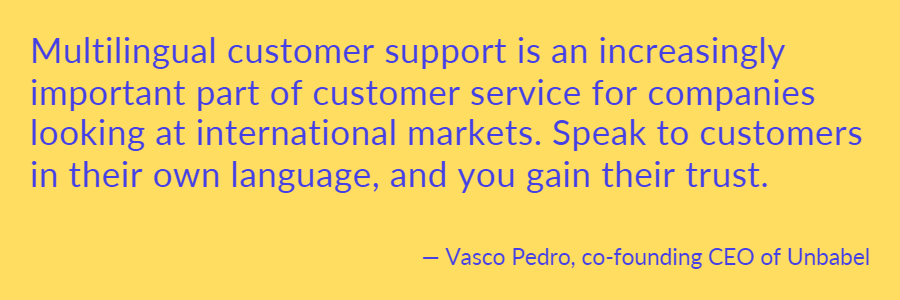
Be available at any time
When buying it, gamers from the whole world can and will play your game at any time of the day, so expect them to reach out at all times. That’s why your Customers Service Support should be available 24/7, especially for massively multiplayer online games. And real-time chat is always a great option.
Be everywhere to provide a great user experience
As your customers can be anywhere in the world, you must be there for them, no matter where they are. Phone and email support are relevant, important, and must-have supporting channels. But don’t ignore other channels, like social media, live chat, and bots. For example, Pokemon Go took the world by storm back in 2016, becoming one of the biggest mobile games in history. As more and more people tried to use the app, their servers crashed. To provide good customer support and improve the user experience, the company started to post regular updates on its official website and social media. “[Niantic] kept Pokémon Go’s devout fans abreast of its progress in fixing bugs such as distorted audio, GPS issues, and server connectivity problems.”
Be personal
Players tend to be extremely loyal if their experience is fun and hassle-free, from start to finish. Of course, errors will occur, and players will not give much importance to instructions. Mistakes will be made by both parties, but if you can solve a problem quickly before escalating, it will pay off in the long run.
User-Generated Content (UGC) – blogs, forums, community content, and customer reviews – are also powerful tools for improving the multilingual customer experience. Game companies that provide translated content are more likely to turn customers into advocates. In other words, the more content you offer them in their own language, the happier your customers will be.
But that doesn’t mean you have to hire an international community of customer support agents. By harnessing the power of machine translation services and human intelligence, you can understand and be understood by your entire player base. It is also important to hire native-speaking agents; get consistent multilingual coverage 24/7, including holidays and peak times. And don’t forget: they hire agents for their human skills, not their language skills.
To bot or not? This is the question.
Today’s consumers demand 24-hour access to customer service.
According to an eMarketer study, 38% of users consider getting their issue solved in a single interaction as the most important aspect of a good digital customer experience, while 26% said it was receiving a speedy and timely response.
If they can’t solve their issue by themselves, your players expect to get help via live chat, phone, or email. They want an immediate response, and whether you meet their expectations or not, they’ll share their user experience on social media and with their peers. Therefore, automation in customer experience is important and it can take many forms, from multilingual customer communication to AI-powered chatbots.
In conclusion,
The gaming market has grown steadily and will continue to do so. The competition is getting tougher. Therefore, acting in this industry is not just all fun and games. It means a lot of work and a customer-centric approach. In a world where the next game option is just a click away or a download away, exceptional customer service is key to keeping players and their loyalty safe.
But what are your players looking for? And how can you involve and support them?
We hope we’ve helped you answer some of these questions, by explaining to you some of the best practices you can implement to provide excellent customer support services. Check out our article if you’re looking for best practices to localize marketing content.
If you want to discuss any specific issue, do not hesitate to contact us. And don’t forget to subscribe to our newsletter or read our blog, where we regularly share information about translation, localization, game marketing, and more.





